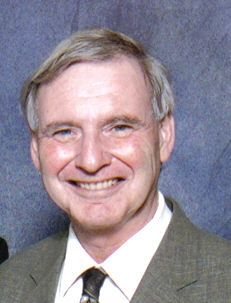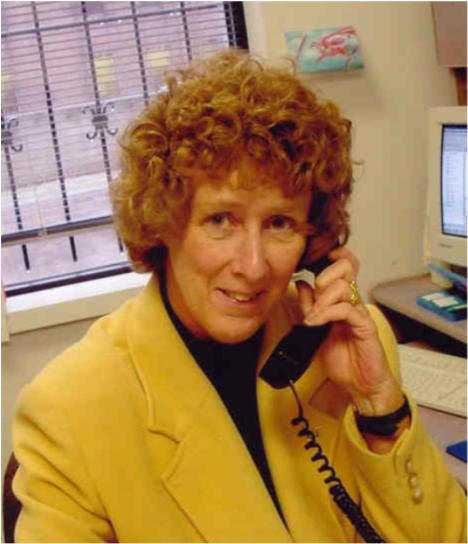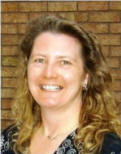OSSTF District 11- Thames Valley
|
District 11 Office |
Education Matters Online
News
Volume 2, Issue 1: November 5, 2003
District Office ReportsClick on any of the items below to go directly to that article. |
District
President: Don Rowdon
|
District President: Don Rowdon
THOUGHTS FROM THE DISTRICT PRESIDENT

After 8 years of fighting to preserve our profession, our dignity, our respect, and most importantly quality public education, teachers and educational workers awoke on October 3 to a province that had been transformed from tory blue to Liberal red! Oh what a relief! A few weeks later we wait in anticipation for Premier McGuinty and Minister Kennedy to return us to the days when teachers and educational workers were valued, trusted and respected. We anticipate the abolishment of the PLP, private school tax credits, the Qualifying Test, the Literacy Test, ISA forms, fully scheduled timetables, the College of Teachers, the Funding Formula, among many others. While no one is holding their breath on instant changes or a total return to the "good old days", I do believe there is significant hope for change, but it will take time. Abolishment????.....not likely. Revamping????.....more probable. What WILL happen, I truly believe, is a change in attitude and approach. The key promise that the Liberals must deliver is an environment of collaboration and consultation. So what should we all do to help?? Relax and enjoy the kids!!!!
Since the election I have taken time to briefly return to my roots. I watched a girls’ basketball game, a football game and took pride in reading about the great things happening in our schools; Art shows, music nights, commencement exercises, the list goes on. There are great kids out there; relax and enjoy them. How?? By doing what you do best! Teaching, Counselling, Instructing, Mentoring, Coaching, all the things that are rewarding and fun when not constantly under attack or on the defensive.
It’s time to get back to basics. Doing our jobs and doing them well and knowing that we have not only made a difference, but that we can stand tall and be proud of it.
![]()
Federation Services Officer and TBU Chief Negotiator: Bob Fisher
E-musement of a Chief Negotiator

So as I ponder what might happen as we pursue the class size issue, I get to thinking about how that stinking funding formula continues to cause problem after problem, and why it makes addressing the class size problem at this point in the school year an interesting (is that the right word?) challenge.
As we have become painfully aware, the funding formula funds students based on an average class size that is based purely on mathematical principles involving the number of students in the system and the average number of classes taken by each student. It has absolutely nothing to do with actual class sizes. That means, of course, that the average can be achieved by having small classes and large classes, as long as the math works out. That has been the case in recent years, as we have seen classes in the high 30’s and low 40’s on a regular basis, despite the fact that the Board has essentially achieved its required average of 22 students per class. The formula also assumes that the average student takes an average of 7.5 credits each year, a number slightly below the average here in Thames Valley. The result of that is an automatic under-funding of students, even if the average class size were based on actual classes, which it isn’t.
Why does this make the class size situation “interesting”? I can think of several reasons.
The first reason is that the Board cannot receive additional funding from the Ministry to allow it to run smaller classes, nor can it raise money locally for that purpose. Increased funding under the formula only comes with an increase in the number of students. So that means that, at this point in the school year, the solution to large classes is unlikely to be found in the hiring of any significant number of Teachers. The only way for that to happen is to draw money from other areas of the Board’s budget, which they could do, but it would cause losses in other areas.
The second reason comes from the first. If the same (or a similar) number of Teachers is to be used, the only way to create new sections is to eliminate or combine some existing sections. The question then arises as to which sections would/could/should be cancelled/combined. Obviously, what allows the large classes to exist is the existence of small classes. So in the absence of the addition of more Teachers, the only way to reduce the number of large classes is to reduce the number of small classes. It’s the mathematical average thing, right? What class size language ends up doing is driving the actual class sizes closer to the average. I suppose they could avoid eliminating or combining small sections to a certain extent by shifting students from large sections into small sections of the same course, but the possibility of doing that is certainly limited. There would still be a significant number of both large and small classes. Naturally, a little foresight on the Board’s part would have resulted in fewer small classes and therefore fewer large classes, but that didn’t happen in many cases. Catch 22. What will they do?
Of course, I knew all of this back in June, as did the Board. So why are we in this situation at the beginning of November? I’ve never been one to say “I told you (them) so,” but … I saw it coming. Did they?
![]()
Federation Services Officer: Mary Lou Cunningham
News from the Human Rights / Status of Women and from Educational Services Committees; RRSP Information

This committee has held two meetings so far, each of which focused on a separate resource that was distributed to the branches. The first was held to promote and distribute a new text from Nelson Publishing called Take Action: A Guide to Active Citizenship by Marc and Craig Kielburger. The committee purchased one copy of this text for each school. In addition, they, together with the Thames Valley District School Board and Nelson, are also sponsoring an event on November 4, with Marc Kielburger, co-founder of Leaders Today and Executive Director of Kids Can Free the Children, who will speak about these two organizations and the new book Take Action: A Guide to Active Citizenship. College Ave SS will also host an assembly with Marc Kielburger.
The second meeting was to promote and distribute the new OSSTF curriculum package Common Threads: Globalization, Sweatshops and the Clothes We Wear. The provincial office provided a copy of this package for each school, as well as copies for the four District 11 teachers who helped pilot this curriculum package last spring.
Plans are underway to commemorate the Day of Mourning on December 6 with the WHITE RIBBON CAMPAIGN being held in all workplaces.
Educational Services Committee: Individual PD funding Requests
The committee has determined that a total of $5500. of their budget of $8,000. will be allocated to individuals for PD this year. The application form has been revised with the criteria and the process for requests clearly stated on the form which is available from the Branch President, the ESC Rep or at our website at www.osstf11.com/ESCpdfunding.htm
An individual should fax a completed application to the District Office c/o Mary Lou who will ensure that they are time stamped, dated and collected for the next ESC meeting where they will be considered for approval. The ESC determined that approximately $500. per month (4 people accessing a maximum of $125.) would be funded for individual requests that meet the criteria as stated on the form.
The committee discussed the necessity of providing funding equitably to as many workplaces and Bargaining Units as possible according to the applications received. Upon approval, the Chair, Kathy Wildfong at Strathroy DCI, will notify the applicant of the status of the application.
OSSTF Teachers RSP Plan
Members eligible for a February 2004 deposit and whose deposits can be calculated at this time have received a notice of the Deposit Request form which should be returned by fax to the District Office as soon as possible. Other members will be notified in November of the amount of deposit for which they are eligible after the annual plan valuation is completed.
Read about further details of the OSSTF RSP Plan at www.osstf11.com/TVDSB-RRSP.htm
![]()
Federation Services Officer: Don Edgar
Another Opportunity to Choose Public Education

Voters are fortunate this fall to have another opportunity to affect the future of local public education–the Municipal Election. School board trustees will be chosen November 10, 2003, and it is important that you get out and vote.
We need Trustees that value teachers and educational workers as well as students. We need Trustees that realize that educational workers’ working conditions are the students’ learning environment and will therefore work to improve those conditions.
OSSTF asked the following questions of each of the candidates for whom we could find a mailing address. The survey questions and the answers that we received can be found in the article TVDSB Trustee Election 2003 in this issue of Education Matters Online.
Public education has deteriorated in recent years in Ontario; please consider your vote carefully and vote in the municipal election on November 10th.
To find out if you are eligible to vote and for advance polls and other election details, please visit our website at: www.osstf11.com/PACtrustees.htm.
![]()
Federation Services Officer: Wendy Anes Hirschegger
Fall News from Various Board Committees and the Provincial Certification Council

From the Executive Overview of the annual review of the TVDSB Vision:
"A review involving input from all facets of the system, conducted during the 2002-2003 school year, revealed strong support for our Vision of "A Caring, Learning Community." A Vision Advisory Committee, compromised of representatives from all employee groups, School Councils, Home and School Associations and the Trustees reviewed all of the input and recommended that since we have continued to learn as an organization the clarification of our Mission statement would further support our focus. As a result, the Board approved, on 2003 September 23, the following revised Mission Statement - "Improving Student Learning." While Thames Valley’s Belief Statements that begin with "Students Come First" remain unchanged, a Goals section has been added to provide specific direction to each school staff and department. A new schematic portrayal of our Vision, Mission and Foundation Principles was also approved."
Sandra Miller, now President of the PSSP Bargaining Unit, and I represent OSSTF on the Vision Advisory Committee. The report itself, the presentation made to the board based on the report, the new Vision schematic and the Mission, Values and Goals statements are all available on the Our Vision section of the board's website.
Teacher Performance Appraisal
The new Teacher Performance Appraisal process was implemented as of September 1, 2003. This process pertains only to regular contract Teachers, not to Occasional Teachers, Continuing Education Teachers or Continuing Education Instructors. The new process is very similar to the former TVDSB process, and so other than the new look to the forms, a more formalized process for classroom observations, and the inclusion of parent and student (grades 11 and 12 only) surveys, teachers not likely find the process to be much different from what they are used to. As always, if you have any concerns or are given an "unsatisfactory" rating, call the District Office.
Please see the District 11 Issue Fact Sheet on Teacher Performance Appraisal for more information and links to the board policy document and the Ministry manual.
Information regarding Certification Rating Statements
It is the individual Teacher's responsibility to provide the board with a current Certification Rating Statement, to be cognizant of any changes to Certification regulations and procedures (all of which are always advertised on the provincial website and in the provincial Update newsletter), and to apply to the OSSTF Certification Department for an updated Certification Rating Statement if one has done upgrading.
If you have any questions about the process, you may consult the Certification website, call the Certification Department directly at 1-800-267-7277 (the phones lines are open for general questions daily between the hours of 11:30 a.m. to 1:00 p.m. and from 3:00 p.m. to 5:00 p.m.) or call or email Wendy Hirschegger at the District Office.
![]()
![]()

